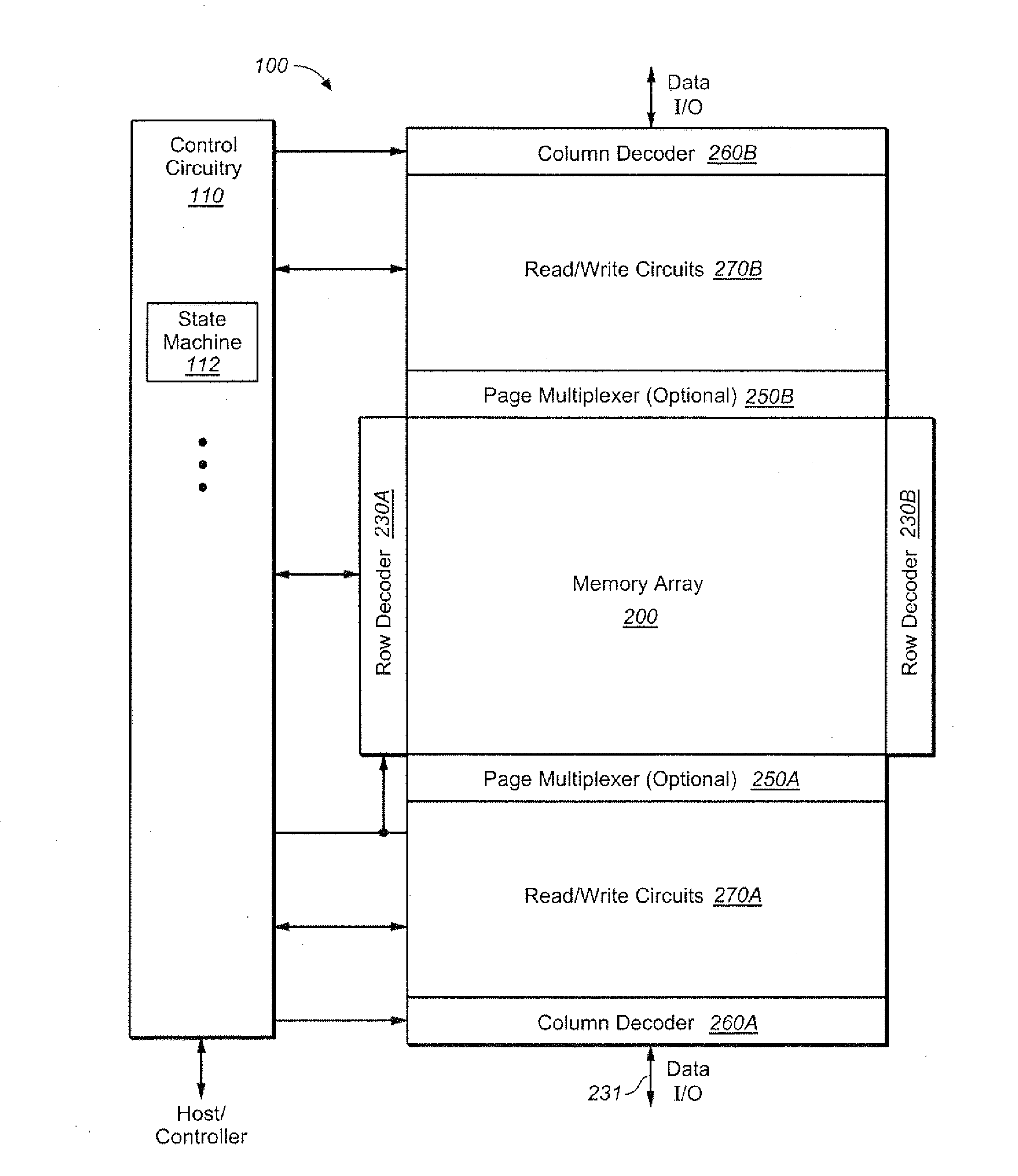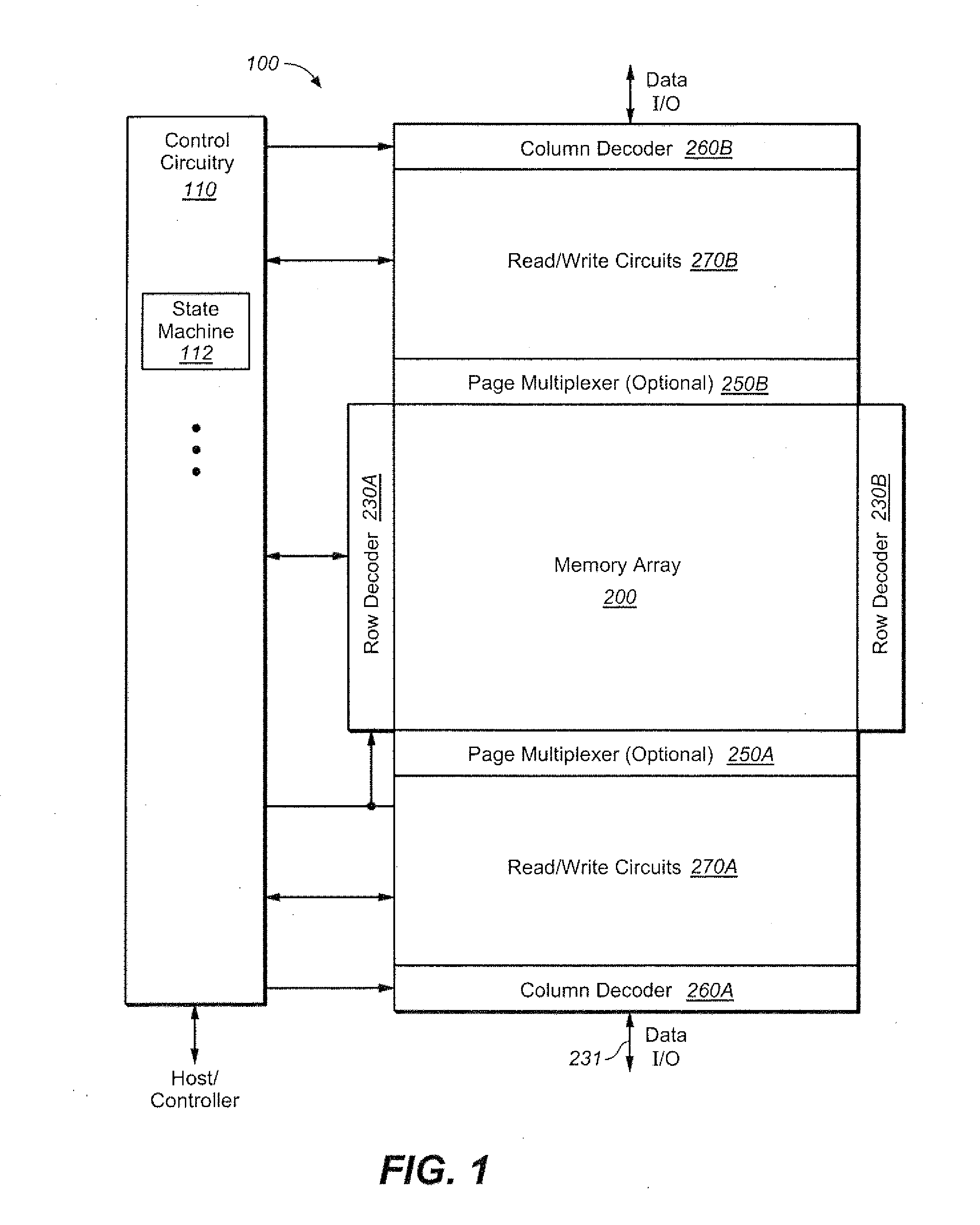Compact High Speed Sense Amplifier for Non-Volatile Memory and Hybrid Lockout
a high-speed sense amplifier and non-volatile memory technology, applied in the field of sensing circuits, can solve the problems of unsuitable mobile and handheld environment, bulky disk drives, and easy mechanical failure, and can not meet the needs of mobile and handheld environments
- Summary
- Abstract
- Description
- Claims
- Application Information
AI Technical Summary
Benefits of technology
Problems solved by technology
Method used
Image
Examples
second embodiment
[0112]The preceding discussion, which are developed further in U.S. patent application Nos. 13 / 277,915 and 13 / 277,966, was based on the circuit of FIG. 12. This section presents another embodiment, shown FIG. 19, which a variation of the circuit of FIG. 12 and is numbered similarly (i.e., 701 of FIG. 19 corresponds to 601 of FIG. 12).
[0113]Relative to the circuit of FIG. 12, the embodiment of FIG. 19 now includes the transistor ICO 791 connected between the INV node of the latch 701 and the MUX node. This can remove the need for a dynamic latch operation. INV has the polarity of the program or verify operation and, as discussed below, during binary (SLC) programming, ICO 791 can pass the VDDSA level to the bit line BL for erase or verify pass of a selected cell along the bit line and pass VSS to BL for programming of the cell.
[0114]The circuit of FIG. 19 also differs from that of FIG. 12 in that the drain side of H00 739 is now connected to high voltage level rather than MUX, so tha...
third embodiment
[0123]FIG. 23 is a third embodiment of a sense amplified circuit that can achieve faster access time with smaller layout area and less power consumption. In FIG. 23, corresponding elements are numbered similarly to the embodiments of FIGS. 12 and 19, (i.e., FCO is 611, 711 and 811 in the corresponding figures). Relative to the embodiment of FIG. 19, the elements of FLAG 801, ICO 891, and FCO 811 are reversed.
[0124]A first difference relates to the power supply connections of the sense amp. To reduce power consumption, the embodiment of this section separates the power supply level of the latch 801 and the power supply level used to drive the bit lines. When in read and verify mode, the sense uses one supply level, such as of 2.5V or more, to drive a bit line. However, there is usually no reason to use such high voltage for data storage and program inhibit operations. For example, a typical program inhibit level requirement for a bit line BL is lower, around 1.8V to 2.0V. In this emb...
fourth embodiment
[0129]This section presents a fourth set of sense amp embodiments that add several features to the embodiments of the preceding section. In particular, it includes some modifications adapted to the implementation of a quick pass write (QPW) functionality and a “hybrid” lockout sensing operation, which is described below. FIG. 24 shows an exemplary circuit for the fourth embodiment. In FIG. 24, corresponding elements are again numbered similarly to the embodiments of FIGS. 12, 19, and 23, (i.e., FCO is 611, 711, 811, and 911 in the corresponding figures).
[0130]Much of FIG. 24 is much as shown in FIG. 23 and will function as described in the preceding section. A first difference of FIG. 24 relative to FIG. 23 that although the nodes COM and SEN can both be connected to VDDSA through respective switches BLX 925 and HLL 939, this is now done by way of switch 941 whose gate is connected to FLG. A switch 943, also controller by FLG, is also now connected between COM and SEN in series with...
PUM
 Login to View More
Login to View More Abstract
Description
Claims
Application Information
 Login to View More
Login to View More - R&D
- Intellectual Property
- Life Sciences
- Materials
- Tech Scout
- Unparalleled Data Quality
- Higher Quality Content
- 60% Fewer Hallucinations
Browse by: Latest US Patents, China's latest patents, Technical Efficacy Thesaurus, Application Domain, Technology Topic, Popular Technical Reports.
© 2025 PatSnap. All rights reserved.Legal|Privacy policy|Modern Slavery Act Transparency Statement|Sitemap|About US| Contact US: help@patsnap.com



